What's New
Displaying results 3661 - 3670 of 4052

Resource | Publications,
Bangladesh is threatened by an HIV epidemic. It is important to identify the best way to achieve rapid reductions in sexually transmitted infections (STI) as an effective approach to HIV prevention. Periodic presumptive treatment (PPT) is suggested as a method for STI control; however, it is considered a short-term solution as the epidemiological justification of this approach is weaker as the STI prevalence declines. Enhanced syndromic management (ESM) is an alternative approach that aims to reduce STI prevalence rapidly, through a single round of presumptive treatment of cervicitis, plus, subsequent monthly clinical care through an ESM protocol based on a risk assessment and laboratory tests.
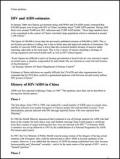
Resource | Publications,
In January 2006, the Chinese government along with WHO and UNAIDS jointly estimated that 650,000 people were living with HIV in China, including about 75,000 AIDS patients. During 2005 there were around 70,000 new HIV infections and 25,000 AIDS deaths.1 These large numbers have to be considered in the context of China's extremely large population which is estimated at around 1,300 million.
The figure of 650,000 is lower than the previously published estimate of 840,000 in 2003. This is not because prevalence is falling, but is due to better data and improved methods of estimation. The number of reported AIDS cases is lower than the estimated number because of massive under reporting, especially in the rural areas. This is for a variety of reasons including a shortage of testing equipment and trained health staff, as well as HIV-related stigma.
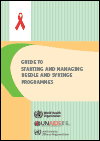
Resource | Guidelines,
The transmission of HIV among injecting drug users and related populations of sex workers, youth and other vulnerable people is greatly adding to the burden of disease in countries worldwide. Evidence from 20 years of research shows that needle and syringe programmes (NSPs) prevent, control and ultimately reduce prevalence of HIV and other blood-borne infections among injecting drug users.
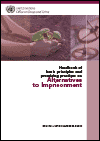
Resource | Publications,
The handbook has been written for criminal justice officials, non-governmental organizations, and members of the community who are working to reduce over-reliance on imprisonment; to improve the delivery of justice, including rehabilitation and reintegration; and to integrate international human rights-based standards and norms into local policies and practices.
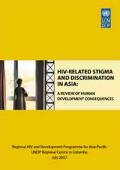
Resource | Publications,
Although there have been many notable successes in both the prevention and treatment of HIV, stigma and discrimination have been intractable problems associated with the AIDS epidemic throughout the world. Stigma certainly has well-established individual consequences: it has been shown to delay HIV testing, restrict utilization of preventative programs, and hinder the adoption of preventative behaviours like condom use and HIV status disclosure (Brooks et al., 2005). Stigma may also have consequences for individual economic well-being as well as broader socioeconomic development (beyond the impact of HIV disease alone). In Asia, where the epidemic arrived relatively late, HIV is spreading with rapid speed. In 2005, the number of AIDS cases in Asia topped 8 million; this is compared to approximately 3 million people just 10 years prior (UNAIDS, 2006). Determinants and consequences of stigma and discrimination on socioeconomic development in Asia have yet to be empirically assessed.
In this context, this review is aimed at generating informed discussion among key stakeholders including academia, policy makers, governments, donors and people living with HIV on the phenomenon of stigma and discrimination, with a particular focus on its human development context and impact. The paper also seeks to set a research agenda to foster compelling and disaggregated enquiries into stigma and discrimination.
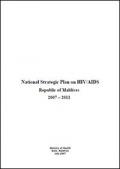
Resource | Publications,
Maldives has so far experienced a low level HIV epidemic. A recent situation analysis "The HIV/AIDS Situation in the Republic of the Maldives in 2006" has pointed out several factors that demonstrate vulnerability to an increasing epidemic: increasing drug use, increasing injecting drug use and the presence of hidden populations of commercial sex and men who have sex with men in the archipelago. The population of the Republic is young, the age of marriage is increasing, serial monogamy is common, condom use is limited, non-emergency blood transfusions are common and men often spend extended periods away from their home islands. Surveillance of sexually transmitted infections has not so far been undertaken in a manner that enables establishment of proper trends.
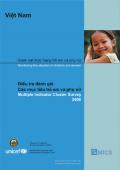
Resource | Publications,
The survey has been conducted as part of the third round of MICS surveys (MICS3), carried out around the world in more than 50 countries, in 2005-2006, following the first two rounds of MICS surveys that were conducted in 1995 and the year 2000. Survey tools are based on the models and standards developed by the global MICS project, designed to collect information on the situation of children and women in countries around the world. Additional information on the global MICS project may be obtained from www.childinfo.org.
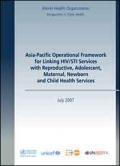
Resource | Publications,
The global commitment to Universal Access to comprehensive HIV prevention, treatment, care and support by 2010 will remain hollow without extraordinary steps to strengthen the health system. Fostering linkages within the health sector — for a start — brings all service delivery points to bear to better detect and treat HIV and AIDS among population of men, women and children who may be at high risk but are unaware of their status.
Buttressing the linkage of a set of services, each with a constituency of users who may be exposed to HIV, is a systematic scale up of services with a vast scope for expansion. Such linkages utilize the strength of each channel — through sexually transmitted infections, reproductive health, adolescent, maternal, newborn and child health services — to bolster the health system’s overall response to one of 21st century’s most harrowing epidemics.
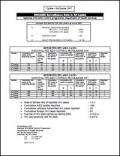
Resource | Fact Sheets,
National STD/AIDS Control Programme, Department of Health Service, HIV/AIDS Estimates for Sri Lanka as of end 2005

Resource | Publications,
The project will contribute to the national development goals of the Interim Afghanistan National Development Strategy (I-ANDs) o f maintaining Human Immunodeficiency Virus (HIV) prevalence below 0.5 percent in the general population and below 5 percent among vulnerable groups at high risk o f infection. The project’s development objectives are to slow down the spread o f HIV and build up the national capacity to respond to the epidemic. This will be accomplished by: (a) behavior change among vulnerable groups at high risk; and (b) improving knowledge of HIV prevention and reducing stigma related to HIV and (Acquired Immunodeficiency Syndrome) AIDS in the general population.





